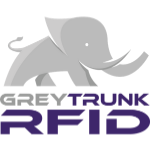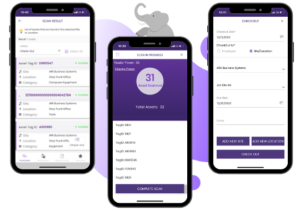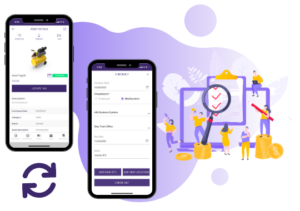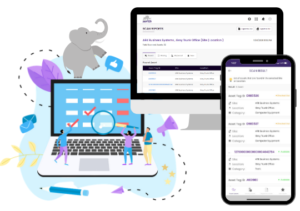
Radio-Frequency Identification (RFID) has played a major role in the field of asset tracking. Through the use of RFID, organizations can accurately track their assets while avoiding some of the headaches that methods like using an Excel spreadsheet would bring. By using this guide, your business can learn how to set up both a mobile RFID fixed asset tracking system and a handheld Bluetooth RFID reader.
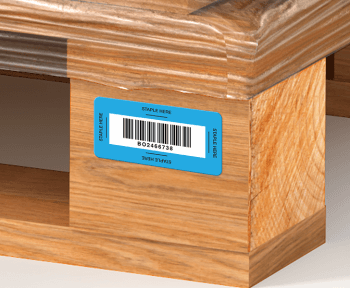
Understanding RFID Technology in RFID Fixed Asset Tracking
As the name implies, RFID uses the power of radio waves to retrieve information on the tag about what it’s attached to. Active and passive RFID tags both serve different purposes. An active tag is best used for long-distance tracking and they’re battery-operated. The signal from an RFID reader is necessary for a passive tag to function, and they’re best used when tracking something from a shorter distance. Because of their toughness and uses in a variety of application, many people prefer using RFID tags over normal barcodes.
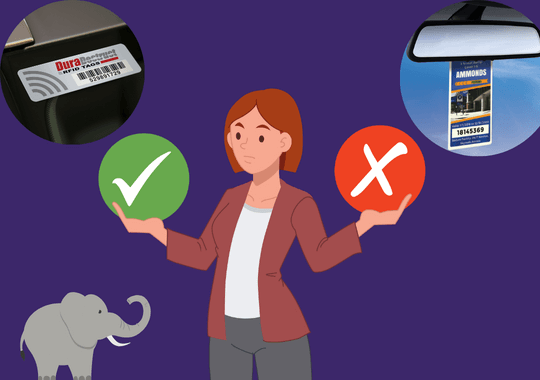
Choosing the Right RFID Tags for RFID Fixed Asset Tracking
Steps Involved in Choosing the Correct RFID Tag
- Determine Your Asset Types
- You’ll need to figure out the kinds of assets you have, the material the assets are made of, where you’re using them and how big they are.
- Tag Requirements: Depending on the needs of the client, an on-metal tag may have to be used for a metal application. When you’re tracking an asset that’s valuable, some extra security may be exactly what you need to help secure your assets.
2. Understand the Environment
- The climate and weather conditions, temperature exposure, moisture and more can impact your asset tags. Consider these factors as you look for the right tag for your organization.
- You’ll want to think of the environment the tags are being used in. If they’re outdoors in the rain, you’ll want a tag that’s waterproof, etc.
3. Determine the Required Read Range
- Short and Long Range: When you’re performing the scan of the RFID tags, how far away will the RFID reader be from them? Active tags are used for long distances while passive tags work best from a short distance.
- Tag/Reader Compatibility: Not all Bluetooth RFID readers are going to work with all tags. Make sure that the tags that you’ve purchased work with your reader’s read range and frequency.
4. Evaluate Tag Form Factor and Durability
- Size/Shape: When you’re choosing a tag for your organization, think about what tag will fit on the asset without interrupting its everyday functions.
- Durability: Depending on how long you expect your asset tags to last, you may want to consider a different variety of asset tag.
5. Cost and Benefit Analysis
- Cost-Per-Tag: After you’ve determined what will be beneficial for your organization, it’s a good idea to compare the costs of the tags and all of their benefits against each other.
- ROI Calculator: What’s your return on investment going to be? Using an ROI calculator helps your organization to see which RFID tags can save them the most time and money.
6. Testing and Pilot Runs
- Sample Testing: Samples can be a very effective tool for determining if an RFID tag is effective during the day-to-day operations of an organization or business.
- Pilot Program: A small test run or “pilot program” in which you test out RFID tags on a portion of your assets and then use the results to make changes as needed.
The type of RFID tag that you choose to track your assets is a very important choice. Tag flexibility, extreme weather/temperature conditions and metal application surfaces can all impact performance.
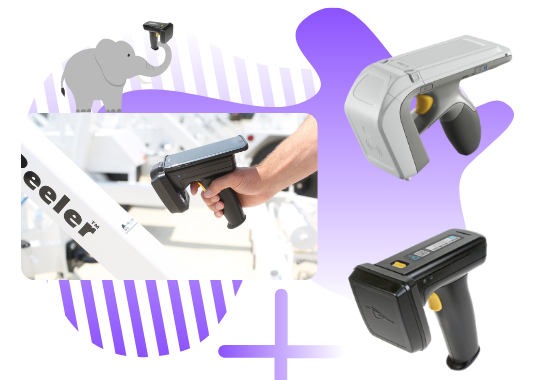
Handheld Bluetooth RFID Readers
This type of reader is both simple-to-use and portable. After you connect one to your smartphone, you can track assets with ease. As you’re purchasing a reader, make sure to consider its compatibility with your RFID tags, the shape/comfort of the device and how long the battery lasts. Handheld Bluetooth RFID Readers can quickly scan large amounts of assets from a distance, which make the inventorying process much easier.
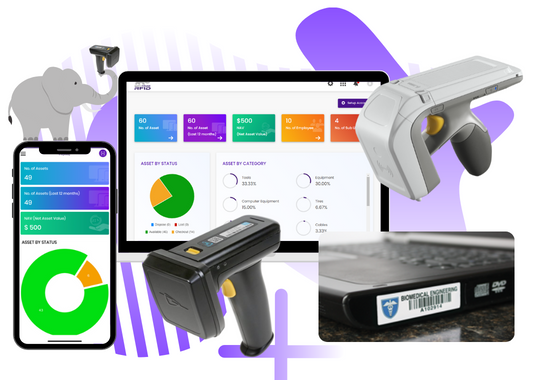
Asset Tracking Software Integration
Handheld readers make the asset tracking process simpler, but you still need to choose the best asset tracking software to fit your needs. An asset tracking software such as Grey Trunk RFID is simple-to-use and it allows you to export data for your use while also running reports on the information you need to know.
Implementation Steps:
- Asset Identification: You need to know how many assets you have to track and what kind of assets they are before you can figure out the right RFID tag for your business.
- Tagging Assets: As you place RFID tags on what you’re tracking, make sure that they’re in a spot that’s easily accessible.
- Setting Up Handheld RFID Readers: Make sure that your RFID equipment is at full battery before you begin doing any scanning/inventorying.
- Software Setup: In order to use an asset tracking software like Grey Trunk, you need to input the data of the assets that you wish to track. We make this easy through custom asset fields and a simple data import system.
- Staff Training: For asset tracking software and equipment to be truly effective, your team needs to know how the readers and software work.

Overcoming Common Challenges
- Environmental Interference: Some tags will work better for one workplace over another, so consider the environment when selecting the right tag.
- Effective Use of Handheld Readers: Different RFID tags will have different read ranges that work the best for them. Teach this to your staff so that they can track assets as well.
- Data Management: You need to determine how data from your asset tracking software is stored and used so that it can be used for further research/analysis.
Conclusion
When RFID asset tracking is used in combination with Bluetooth RFID readers, organizations can make tracking their assets easier than ever before. Asset tracking may seem like a complex topic, but we hope to make it a simpler process through the use of Grey Trunk RFID. When you break it down into steps and follow the instructions in this guide, your business can experience the benefits of RFID.
It’s time for your organization to up its asset tracking game through the use of RFID technology. Once you’ve determined what your business needs and the best RFID tags/readers to fulfill those needs, it’ll be time to try out a new and efficient asset tracking system using RFID.

Related Articles
- RFID Starter Kit: A Comprehensive Guide
- How RFID Inventory Tracking System Streamlines Businesses
- Fixed Asset Tracking Software: Why Your Organization Needs It
 | About the Author: Colby Weber Colby is Grey Trunk RFID’s Marketing Assistant. He enjoys being able to combine his marketing and public relations skills with his writing and graphic design abilities to assist in Grey Trunk’s marketing efforts. He has one brother, a niece, and two nephews. In his free time, Colby enjoys playing video games and trading card games. He’s also a fan of anime and creating digital artwork on his drawing tablet. |
